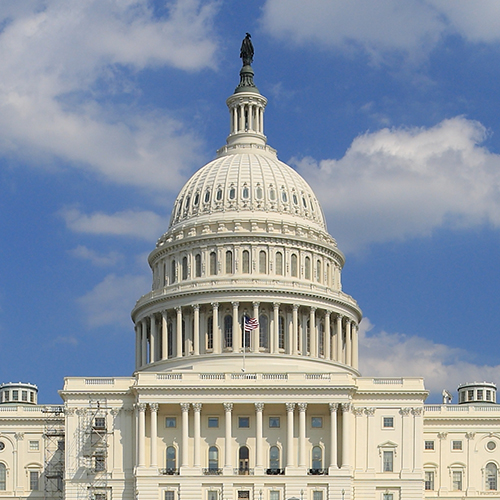While working as a journalist in India in 2009, Jessica Bachman heard a common refrain: older Indians, learning that she had spent several years in Russia, waxed nostalgic about the many Soviet books they had read during their childhood. So many Indians commented on the abundance of Soviet books during the Cold War era that Bachman decided it was a topic worth exploring. Last summer she finally had her chance, thanks to a Mellon Summer Fellowship for Public Projects in the Humanities, awarded by the UW's Simpson Center for the Humanities.
The Mellon Summer Fellowship supports graduate student research that engages public audiences. Bachman, now a graduate student in the UW Department of History, created an exhibit for Suzzallo Library about cultural connections between the Soviet Union and India during the Cold War era. "Bollywood and Bolsheviks: Indo-Soviet Collaboration in Literature and Film, 1954-1991" will be on view in Suzzallo’s Allen Library lobby through May 31. The College of Arts & Sciences provided additional funding for the project.

Bachman explains that in the years after Joseph Stalin’s death, the Soviet Union made a concerted effort to distribute books to India and many other postcolonial nations, offering the books at low or no cost. “The Soviets translated texts from all the different Soviet languages into 13 Indian languages, including English,” says Bachman. “They had the largest translation program in the world. There were books about science and technology, books about the natural world, novels, folktales, and more. One of my hosts in India still remembers writing to Kremlin No. 9 to request books as a child, and then receiving beautiful Soviet books in the mail for free.”
One might assume that the Soviet Union’s efforts to translate and distribute its books widely was politically motivated. That was partially true, but Bachman believes the effort went beyond politics and reflected the Soviet Union’s genuine interest in protecting and supporting the diversity of national linguistic identities in the world.
“You cannot simply boil this down to the word ‘propaganda,’” she says. “Of course there were translations of Marx and Engels and Lenin, but that was just one publisher. There were dozens of other publishers producing a wide variety of books, as you can see in the exhibit. They wanted people to read books in their own languages.”
The Cold War...is seen as a time when the Soviet Union was isolated from the world, but as the exhibit demonstrates, that was simply not the case.
The exhibit features two “living rooms,” one Russian and one Indian, where visitors can relax and peruse books translated and published by the Soviet Union for Indian readers. Bachman found some of the books in used bookstores in India and ordered others from publishers who still have them in stock. A few books are on loan from private collectors. The exhibit also includes displays about the cultural exchange between the Soviet Union and India, and a tablet computer that offers clips from some of Bachman’s interviews for the project. She interviewed more than two dozen people in the U.S., India, and Russia, ranging from a book translator in Russia to a UW pathologist who recalls how reading Soviet books as a child in India sparked her interest in science.
Those memories are powerful and have inspired at least half a dozen Facebook groups about Soviet books translated into Indian languages. For some Indian families with little money, the availability of inexpensive Soviet books meant they could finally build a library in their home. “These books were heavily subsidized,” says Bachman. “This was not a profit-driven enterprise. They were cheap enough that Indians who had never been able to afford books before could suddenly buy books. And because the books were translated into vernacular languages, grandparents who didn’t speak English were able to read to their grandchildren.”

While the impact of Soviet books in India was significant, the cultural exchange went both ways. Bollywood films from India were massively popular in the USSR and led to joint productions between studios in India and many of the Soviet Socialist Republics. Bachman’s exhibit includes a documentary film about Bollywood cinema in Russia, featuring clips from Soviet-era Bollywood films and excerpts from Bachman’s conversations with Bollywood film directors and actors from that period. Emma Hinchliffe, a doctoral student in history, produced the documentary.
Despite her trips to Russia and India and more than two dozen interviews, Bachman feels there is still more to learn about this topic. She wonders, for example, what sort of responses Soviet publishers received after providing an address for feedback on the back of every translated book they distributed. “I know anecdotally that there were many responses,” Bachman says. “I’d like to get access to those.” She also hopes to gain access to archives in Russia and India, though getting permission will be a challenge in both countries.
“This project has really gotten me excited to share my research with the public in a different way than an academic journal,” says Bachman. “More than anything, I hope the exhibit broadens people’s perspectives about the Cold War. It is seen as a time when the Soviet Union was isolated from the world, but as the exhibit demonstrates, that was simply not the case.”
. . .
Bollywood and Bolsheviks will be on view in the Allen Library lobby through May 31, 2017.
More Stories

Is This Presidential Campaign Different?
UW History professor Margaret O'Mara provides historical context for this moment in US presidential politics.

Making Sense of This Political Moment
To navigate this momentous election season, Arts & Sciences faculty suggest 10 books about the US political landscape.

A Statistician Weighs in on AI
Statistics professor Zaid Harchaoui, working at the intersection of statistics and computing, explores what AI models do well, where they fall short, and why.